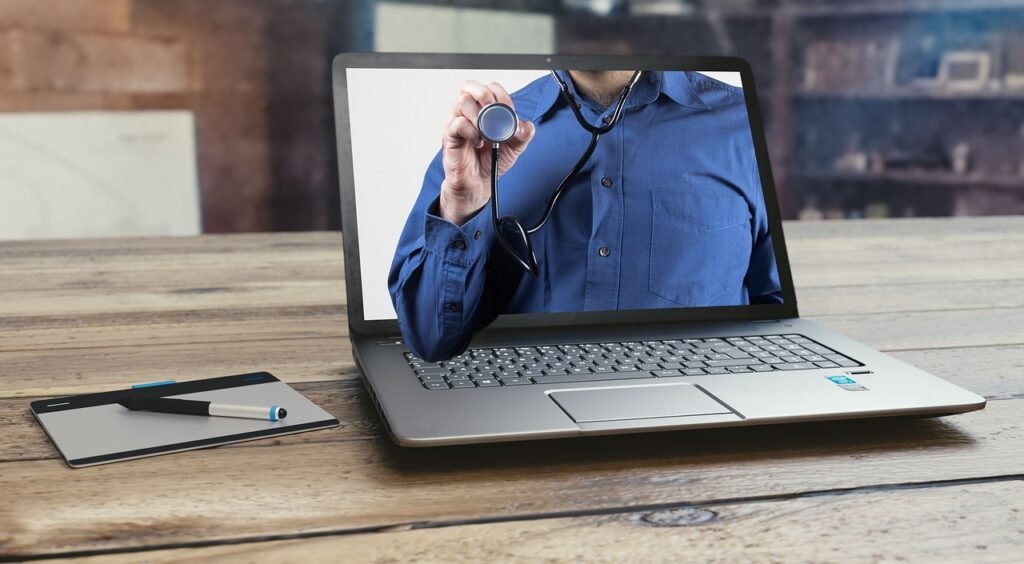Hey there! Have you ever wondered how telehealth services can transform the way we access healthcare? Well, wonder no more! In this article, we will unlock the potential of telehealth services and show you how to make the most of them. Whether you’re looking for convenient medical consultations, remote monitoring of chronic conditions, or mental health support from the comfort of your own home, telehealth services have got you covered. So, let’s dive in and explore this innovative approach to healthcare together!
The Definition of Telehealth Services

This image is property of pixabay.com.
Check out our Product Reviews
The concept of telehealth
Telehealth refers to the delivery of healthcare services and information through telecommunication technologies. With telehealth, individuals can access medical care remotely, without the need for in-person visits to healthcare facilities. This technology-enabled approach allows for the diagnosis, treatment, and monitoring of patients from a distance, using video conferencing, mobile applications, remote monitoring devices, and other digital platforms.
Check out our Product Reviews
The benefits of telehealth services
Telehealth services offer numerous benefits for both patients and healthcare providers. One of the primary advantages is increased accessibility to healthcare, especially for individuals living in remote areas or facing mobility challenges. With telehealth, patients can connect with healthcare professionals and specialists, regardless of their geographical location.
Furthermore, telehealth offers convenience and flexibility. Patients can schedule appointments and consultations at their convenience, eliminating the need to travel to a physical clinic or hospital. Additionally, telehealth services often have shorter waiting times, reducing the overall time commitment for patients.
Another notable advantage of telehealth services is cost-effectiveness. By eliminating the need for travel and infrastructure costs, telehealth can lower healthcare expenses for both patients and providers. Additionally, remote monitoring and early intervention can help prevent the escalation of health issues, leading to potential cost savings in the long run.
Telehealth also contributes to improved patient engagement and satisfaction. With telehealth, patients can actively participate in their healthcare, accessing information, obtaining virtual consultations, and monitoring their health conditions more closely. This increased engagement often leads to greater patient satisfaction and better health outcomes.
Lastly, telehealth enhances care coordination and collaboration among healthcare providers. With secure and efficient communication platforms, telehealth enables seamless sharing of patient information, resulting in improved care coordination and faster decision-making.

This image is property of pixabay.com.
The different types of telehealth services
Telehealth services encompass various medical specialties and healthcare domains. Some of the most common types of telehealth services include:
Telemedicine in primary care
Telemedicine involves the remote delivery of primary medical care services, such as diagnosis, treatment, and follow-up care. Patients can consult with primary care providers through video conferencing or telephonic communication, eliminating the need for in-person visits for minor illnesses and routine consultations.
Telepsychiatry and mental health services
Telepsychiatry allows individuals to receive mental health services remotely, enabling access to psychiatrists, therapists, and counselors through secure video conferencing platforms. This type of telehealth service has proven to be particularly beneficial in addressing mental health disparities and reaching underserved populations.
Telecardiology and cardiovascular care
Telecardiology enables remote monitoring of cardiac conditions, including electrocardiogram (ECG) readings, remote pacemaker evaluation, and continuous cardiac monitoring through wearable devices. This telehealth service enhances the management and timely intervention for patients with heart conditions, reducing hospitalizations and emergency room visits.
Teleophthalmology and vision care
Teleophthalmology facilitates remote eye examinations, screenings, and consultations with ophthalmologists. Through telehealth platforms, patients can submit images and videos of their eyes for evaluation, leading to early detection and management of various eye diseases.
Teledermatology and dermatological care
Teledermatology allows patients to consult with dermatologists remotely, sharing images and descriptions of skin conditions for evaluation and treatment recommendations. This telehealth service enables timely diagnosis and treatment, reducing the need for in-person appointments for common dermatological issues.
Teleoncology and cancer care
Teleoncology supports the remote management and follow-up of cancer patients, providing access to oncologists and other specialists. Through telecommunication technologies, patients can receive remote consultations, discuss treatment options, and monitor their treatment progress, reducing the burden of frequent hospital visits.

This image is property of pixabay.com.
The role of technology in telehealth services
Technology plays a crucial role in enabling and enhancing telehealth services. Various digital tools and platforms facilitate the secure transmission of information and facilitate real-time communication between healthcare providers and patients. Some of the key technologies used in telehealth services include:
Video conferencing and telepresence
Video conferencing platforms allow for face-to-face interactions between patients and healthcare providers. This technology enables virtual consultations, follow-up visits, and multidisciplinary discussions, fostering a sense of connection and trust between healthcare professionals and patients.
Mobile applications and remote monitoring devices
Mobile applications and remote monitoring devices enable patients to track their health conditions and share data with healthcare providers. These technologies support ongoing monitoring of vital signs, medication adherence, and symptom reporting, enabling early intervention and personalized care.
Electronic health records (EHRs) and data management systems
EHRs and data management systems play a vital role in telehealth services by securely storing and transmitting patient information. These systems ensure the continuity of care by providing healthcare providers with access to accurate and complete patient records, regardless of geographical location.
Artificial intelligence (AI) and machine learning
AI-powered tools and algorithms can assist healthcare providers in diagnosing and treating patients remotely. These technologies analyze patient data, identify patterns, and provide insights to support clinical decision-making, enhancing the accuracy and efficiency of telehealth services.
In conclusion, telehealth services offer numerous benefits, allowing for increased access to healthcare, convenience, reduced costs, improved patient engagement, and enhanced care coordination. Telehealth encompasses various medical specialties and relies on technologies such as video conferencing, remote monitoring devices, and AI algorithms. With the evolving landscape of healthcare, telehealth is expected to play a significant role in the future, positively impacting the delivery of healthcare services.
Check out our Product Reviews